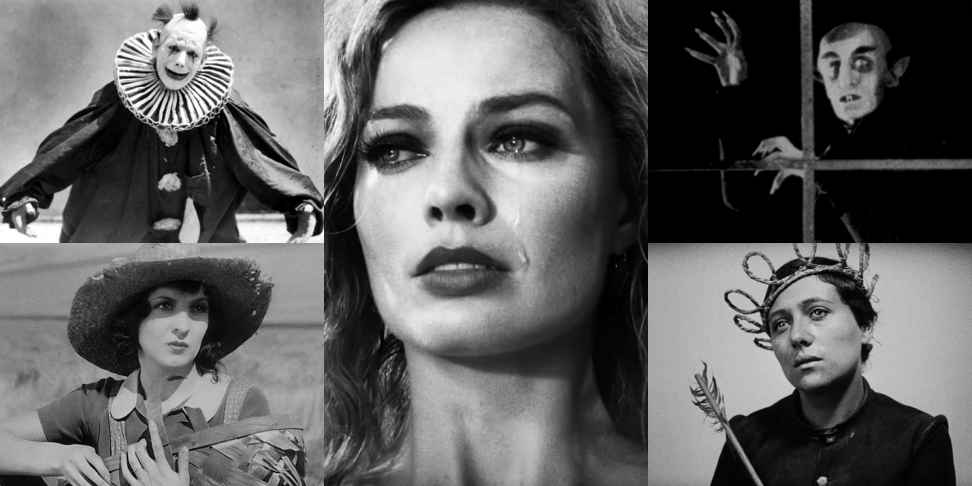Imagine a world where Charlie Chaplin could only mime his hilarious antics, or a heart-wrenching love story unfolded entirely without spoken words. This was the captivating realm of silent films, a vibrant era in cinema history where moving pictures relied on their visual language to weave magic. But how did these silent storytellers manage to evoke laughter, tears, and gasps without a single line of dialogue? Let’s delve into the fascinating world of silent films and rediscover the art form that spoke volumes with its eyes.
The Power of Visual Storytelling
Silent films were a masterclass in visual storytelling. Without the luxury of spoken dialogue, filmmakers relied on a symphony of techniques to convey emotions, plot, and humor. Expressive acting took center stage. Stars like Rudolph Valentino and Lon Chaney mastered the art of conveying a character’s inner turmoil through a raised eyebrow, a clenched fist, or a heart-stopping scream.
Cinematography played a crucial role, employing close-ups to magnify emotions and dramatic camera angles to build suspense. Editing became a narrative tool, with fast cuts creating a sense of urgency and slow pans building anticipation. Intertitles, those little text cards that popped up occasionally, served as dialogue substitutes, offering essential plot points or witty remarks.
Silent Films Genres and Themes
The silent era wasn’t confined to a single genre. From slapstick comedies that had audiences roaring with laughter (think Charlie Chaplin’s antics in “The Gold Rush”) to dramatic tearjerkers that explored love and loss (like Greta Garbo’s performance in “Camille”), silent films offered something for everyone. Historical epics like D.W. Griffith’s “The Birth of a Nation” (though controversial for its historical inaccuracies) transported viewers to bygone eras. Westerns, with their iconic shootouts and rugged landscapes, captured the Wild West spirit. Even science fiction dipped its toes into the silent pool, with films like Georges Méliès’s “A Trip to the Moon” taking audiences on fantastical journeys.
Recurring themes also found their voice in silent films. Love stories, a universal language, were a constant feature. Films explored themes of social commentary, highlighting social injustices and the plight of the downtrodden. Comedies often lampooned societal norms and poked fun at authority figures. Silent films, at their core, explored the human condition, reminding audiences of universal emotions that transcended language barriers.
Experiencing Silent Films in the Digital Age
Just because the era of silent films has passed doesn’t mean you can’t experience their magic today. The good news is, silent films are experiencing a resurgence. Film festivals dedicated to silent cinema screenings are popping up around the world. Online archives, like the Library of Congress’s National Audiovisual Conservation Center, offer a treasure trove of restored silent films for your viewing pleasure.
However, due to the age of the film reels, many silent films are at risk of deterioration. Thankfully, services like affordable video format conversion and converting old films to digital can help restore and preserve these vintage gems. Imagine rediscovering a forgotten family film from your attic, only to have it brought back to life through the magic of digital conversion!
One of the most captivating ways to experience silent films is with live music accompaniment. A skilled pianist or a majestic theater organ can add a whole new dimension to the viewing experience. The music underscores the emotions on screen, building tension during dramatic scenes and adding a playful touch to comedic moments. It’s a truly immersive experience that transports you back to the golden age of cinema.
Conclusion
Silent films may not have spoken a single word, but their visual language spoke volumes. From the expressive faces of silent stars to the innovative techniques employed by filmmakers, these films remain a testament to the power of storytelling. So, the next time you’re looking for a unique cinematic experience, delve into the world of silent films. You might just be surprised by how much these movies, though lacking spoken dialogue, can make you laugh, cry, and everything in between. After all, sometimes, the most powerful stories are the ones told with just our eyes.
Have A Look :-
- What is bootstrapping entrepreneurship?
- What Types Of Games Are Available On Snokido?
- Can Teachers See How Much Time You Spend on Delta Math?

